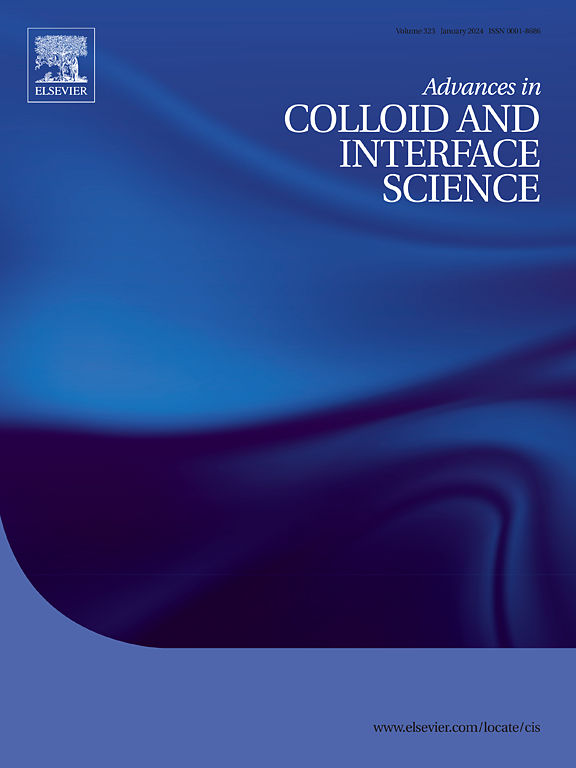Metal/metal oxide nanoparticles with antibacterial activity and their potential to disrupt bacterial biofilms: Recent advances with emphasis on the underlying mechanisms
IF 19.3
1区 化学
Q1 CHEMISTRY, PHYSICAL
引用次数: 0
Abstract
The rate of human mortality from infectious diseases caused by antibiotic-resistant bacteria is a major public concern. Currently, the search for new strategies to treat infections and overcome antimicrobial resistance is a challenge. Nanoparticles (NPs) offer an alternative approach to biocide design that involves antibacterial mechanisms other than antibiotics. The attention is primarily attracted due to the large surface area, diverse physical and chemical properties, variety of precursor materials, and the ability to form hybrid structures. Of particular interest are metal and metal oxide NPs that can survive in harsh conditions without losing their colloidal stability. They provide long-term antibacterial activity and can destroy bacterial biofilms. This review summarizes and discusses recent progress in understanding the antibacterial mechanisms of metal/metal oxide NPs, highlighting three key aspects: physical interaction with the cell wall, release of metal ions, and the generation of reactive oxygen species (ROS). Unlike antibiotics with a single mode of action, NPs can simultaneously exhibit multiple mechanisms with a synergistic effect. This leads to the destruction of cell membranes, damage to DNAs and proteins, inactivation of enzymes, oxidation of cellular components, and ultimately, cell death. The activity of NPs against bacterial biofilms is also considered. In addition, this review focuses on the current state of the most widely used metal-containing NPs with a comprehensive discussion of the specific mechanisms for each type (Ag, Au, Cu/CuO, TiO2, ZnO, Fe2O3/Fe3O4). Finally, the review discusses approaches to enhancing the biocidal efficacy of NPs through modification and composite formation, as well as the use of light and magnetic field.

具有抗菌活性的金属/金属氧化物纳米颗粒及其破坏细菌生物膜的潜力:近期进展,重点是潜在的机制
人类因耐抗生素细菌引起的传染病死亡率是公众关注的一个主要问题。目前,寻找治疗感染和克服抗菌素耐药性的新策略是一项挑战。纳米颗粒(NPs)为杀菌剂设计提供了一种替代方法,该方法涉及抗生素以外的抗菌机制。引起人们关注的主要原因是其表面积大、物理化学性质多样、前驱体材料种类繁多以及能够形成杂化结构。特别令人感兴趣的是可以在恶劣条件下存活而不失去胶体稳定性的金属和金属氧化物NPs。它们具有长期抗菌活性,并能破坏细菌生物膜。本文综述并讨论了金属/金属氧化物NPs抗菌机制的最新进展,重点介绍了三个关键方面:与细胞壁的物理相互作用、金属离子的释放和活性氧(ROS)的产生。与具有单一作用模式的抗生素不同,NPs可以同时表现出具有协同效应的多种机制。这会导致细胞膜的破坏,dna和蛋白质的损伤,酶的失活,细胞成分的氧化,并最终导致细胞死亡。NPs对细菌生物膜的活性也被考虑。此外,本文综述了目前应用最广泛的含金属纳米粒子的现状,并对每种类型(Ag, Au, Cu/CuO, TiO2, ZnO, Fe2O3/Fe3O4)的具体机制进行了全面的讨论。最后,综述了通过改性、复合以及利用光、磁场等途径来提高NPs生物杀灭效果的途径。
本文章由计算机程序翻译,如有差异,请以英文原文为准。
求助全文
约1分钟内获得全文
求助全文
来源期刊
CiteScore
28.50
自引率
2.60%
发文量
175
审稿时长
31 days
期刊介绍:
"Advances in Colloid and Interface Science" is an international journal that focuses on experimental and theoretical developments in interfacial and colloidal phenomena. The journal covers a wide range of disciplines including biology, chemistry, physics, and technology.
The journal accepts review articles on any topic within the scope of colloid and interface science. These articles should provide an in-depth analysis of the subject matter, offering a critical review of the current state of the field. The author's informed opinion on the topic should also be included. The manuscript should compare and contrast ideas found in the reviewed literature and address the limitations of these ideas.
Typically, the articles published in this journal are written by recognized experts in the field.

 求助内容:
求助内容: 应助结果提醒方式:
应助结果提醒方式:


